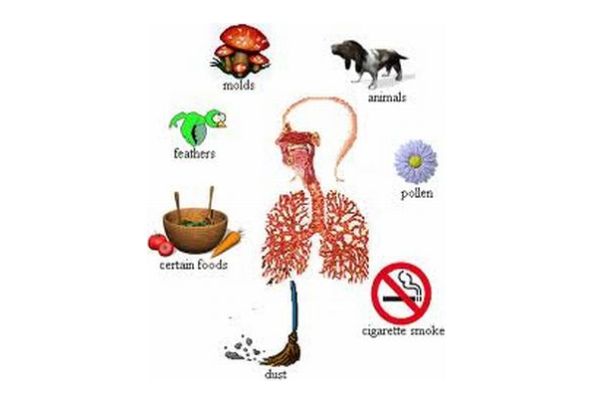
Our home is the place where we love the ease and comfort but it may harbor millions of allergens that may trigger an asthma attack. Identifying the allergen which may be already present in your home is the best possible way to prevent asthma attack. Few allergens are very common which need your attention because avoiding those could virtually save your life. Following are some of those common allergens that may trigger the asthma attack.
1. Environmental tobacco smoke
An asthma attack can be triggered easily in most of the cases by the cigarette smoke that contains tobacco. Tobacco irritates the bronchioles of the lungs and in response the lungs cause inflammation. The initial symptoms of respiratory inflammation are runny nose, watery eyes, sinus congestion, and exertion while breathing. With more and more exposure to this trigger the condition gets worse and if the person has a history of asthma, this may precipitate an attack. Unfortunately 25 percent of the asthma patients are smokers or on the contrary many of those who smoke head toward asthma. It is estimated that around 1 million of children get their asthma worsened by exposure to environmental tobacco smoke.
2. Pet dander
This is an informal term referring to the shedding of the animals that could be scales of dried skin, hair or feathers. Dander can cause serious allergies to the humans. Whether you have a pet dog, cat, bird, etc. they have all the potential to leave dander all around the house to be picked up by humans and trigger asthma. Though there are some low allergy pets but the term hypo allergenic pets is not relevant as there is no true allergen free pet. There is a common myth that short haired pet are less allergic than the long haired pets. Actually most of the times it is not the hairs that are responsible for triggering allergy but the dander that are left behind the animal like scales of the dead skin. The dander triggers the inflammatory response of the body that aggravated to an asthmatic attack.
3. Dust mites
Sometimes these small invisible insects can cause a serious allergic response. Dust mites are the tiny insects found in almost every home. They are invisible to the naked eye and thrive on the dead skin cells and dust on the carpets, mattresses, pillows, and certain furniture. It should be noted that dust mite pieces as well as the droppings of the mite can act as potent allergens. These allergens can easily travel through air and can enter the respiratory tract of the inhabitants which lead to an inflammatory response of the respiratory tract and can be detrimental for the people having a history of asthma.
4. Cockroaches
Cockroaches can’t actually harm us by biting or killing us with their poison but even then we hate them because they are known to cause a severe allergy and thus we reflexively try to avoid them. It is the most difficult pest to avoid in our homes. Many people make it a regular practice to use pesticides to kill the cockroaches infested in the house since complete eradication forever is not possible. Cockroaches are a very powerful allergy causing pest and lead to a severe allergy. It can trigger a serious asthma attack.
5. Molds
Molds are fungi that can grow on almost every food material and animal anywhere the moisture is present. Molds are tiny spores that can travel easily through air and thrive on the moisture laden area. These spores can remain dormant for a long time and can multiply when there arrives an opportunity. Inhalation of these spores may cause serious allergic reaction. Moist places in the home like kitchen sink or the places where there is water logging are the ideal places for the growth of molds.
6. Dust
Dust itself is a potent allergen that can cause severe allergy. This is something which is difficult to avoid but can be taken care with proper cleaning of the home and even if you get allergic to the dust in your home try protecting your face with mask. Dust inhallation causes severe allergic response and triggers asthma.




